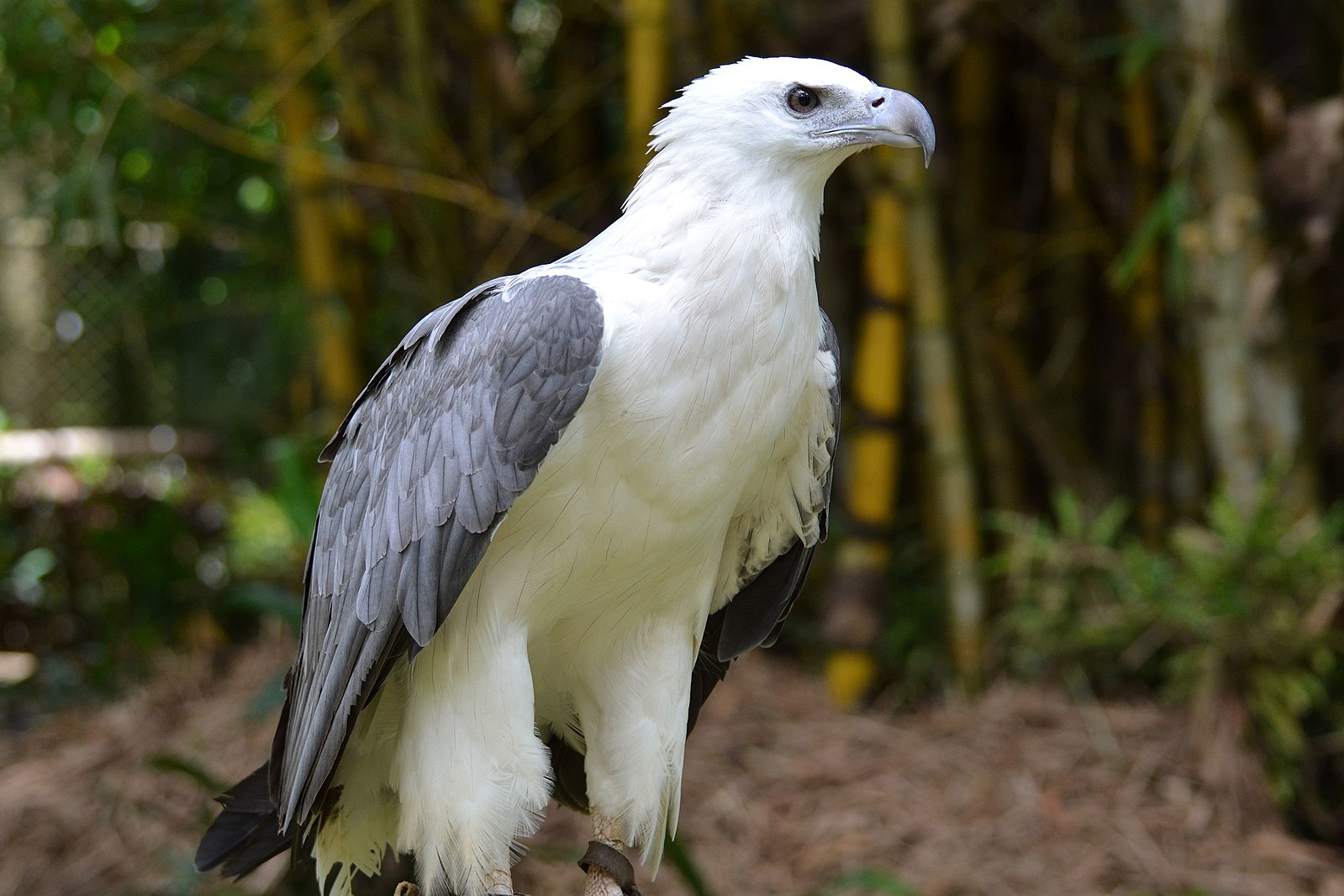White-bellied Sea Eagles (Haliaeetus leucogaster) are known for their large, stick nests that they build in a variety of locations. These majestic birds are found in coastal regions of Asia, from India to Australia, and their nesting habits are a fascinating aspect of their biology.
Nesting Locations of White Bellied Sea Eagles
White-bellied Sea Eagles typically build their nests in the following locations:
-
Tall Trees: These birds often choose tall, dead trees or trees with prominent branches as nesting sites. The nests are constructed using large sticks and can be quite sizeable, measuring up to 2 meters in diameter and 1 meter in depth.
-
Man-made Structures: In some areas, White-bellied Sea Eagles have been observed nesting on man-made structures, such as electricity pylons or communication towers. These structures provide a suitable platform for their large nests.
-
Cliffs: In certain regions, particularly in coastal areas, White-bellied Sea Eagles may build their nests on rocky cliffs or ledges. These nesting sites offer a commanding view of the surrounding area.
-
Ground Nests: In remote and inaccessible areas, these birds have been known to construct their nests directly on the ground, often in dense vegetation or on small islands.
Nest Construction and Maintenance
 Image source: bellied sea eagle by shankar s
Image source: bellied sea eagle by shankar s
The construction of a White-bellied Sea Eagle’s nest is a collaborative effort between the male and female birds. Over a period of three to six weeks, they gather large sticks and other materials to build the nest, which is typically located in a prominent position with a clear view of the surrounding area.
Once the nest is built, the birds continue to maintain and add to it over the years, as they often reuse the same nest site for multiple breeding seasons. The nest becomes covered in the birds’ feces and pellets, and the immediate area around the nest is often littered with the remains of their prey.
Egg Laying and Incubation
The female White-bellied Sea Eagle typically lays a clutch of two dull, white, oval eggs. These eggs are incubated for approximately six weeks before they hatch. The young chicks are semi-altricial, meaning they are born with a covering of white down feathers and are dependent on their parents for food and care.
Threats and Conservation Concerns
White-bellied Sea Eagles are sensitive to human disturbance, and their nesting sites are often threatened by various factors, including:
- Habitat Loss: The removal of suitable nesting trees or the development of coastal areas can lead to a loss of suitable nesting habitat for these birds.
- Human Disturbance: Direct human activity near nesting sites can cause the birds to abandon their nests, leading to breeding failure.
- Collision and Entanglement: White-bellied Sea Eagles are at risk of colliding with power lines, wind turbines, and other man-made structures, as well as becoming entangled in fishing gear or other debris.
- Shooting, Poisoning, and Trapping: In some regions, these birds are still targeted by illegal hunting and trapping practices.
Conservation efforts are underway to protect the White-bellied Sea Eagle and its nesting habitats, but the species remains vulnerable to various threats. Understanding the specific nesting requirements and behaviors of these birds is crucial for developing effective conservation strategies.
Conclusion
The White-bellied Sea Eagle is a magnificent bird of prey that has adapted to build its large, stick nests in a variety of locations, from tall trees to man-made structures and even on the ground. These nesting habits are a testament to the adaptability and resilience of these birds, but they also highlight the importance of protecting their sensitive nesting sites from human disturbance and habitat loss. By understanding the specific nesting requirements of the White-bellied Sea Eagle, we can work to ensure the long-term survival of this iconic species.
References:
- White-bellied Sea-Eagles – Sydney, https://www.sea-eaglecam.org/eagles.html
- White-bellied sea eagle – Wikipedia, https://en.wikipedia.org/wiki/White-bellied_sea_eagle
- White-Bellied Sea Eagle – Facts, Diet, Habitat & Pictures on Animalia.bio, https://animalia.bio/white-bellied-sea-eagle

